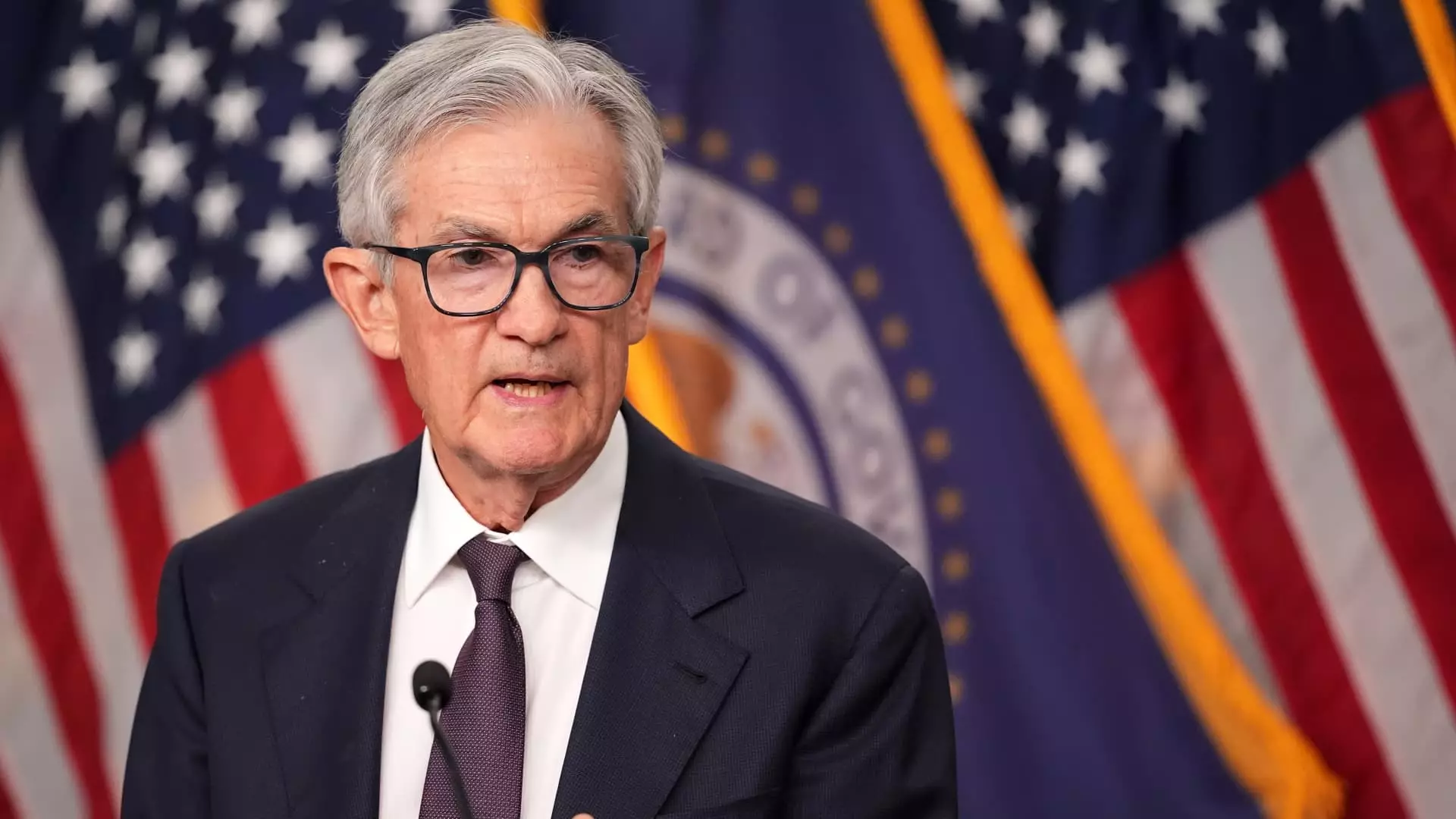The recent Federal Reserve meeting highlighted a significant concern that our economy is teetering on a delicate edge, exacerbated by the uncertainties of tariff policies. The implications of such tariffs are not merely limited to trade deficits; they threaten to spiral inflation into an uncontrollable beast, a notion that has clearly unsettled even the most stoic members of the Federal Open Market Committee (FOMC). During an era when economic growth should be flourishing, the looming shadow of fiscal complications hinders progress. By opting to maintain a steady federal funds rate, the Fed tacitly acknowledged the precariousness of the situation—an outcome that could significantly hinder long-term economic growth.
The minutes from FOMC meetings occasionally reveal the candid fears harbored by the policymakers. Recent discussions have shown that the committee grapples with an increasingly obscure economic outlook, leading them to a cautious stance. While maintaining the federal funds rate between 4.25%-4.5%, the Fed does not reflect confidence; instead, it embodies restraint born from ambiguous signals emanating from both fiscal and trade policies. The suggestion that they might face “difficult tradeoffs” calls into question their ability to manage inflationary pressures without sacrificing employment and growth.
Inflation: A Persistent Dilemma in Unpredictable Times
Fed officials are right to express caution. As inflation continues to rove dangerously close to predefined targets, the uncertainty surrounding its trajectory raises pertinent questions about the adequacy of existing monetary policies. While policymakers have cited “solid” economic growth and a “broadly in balance” labor market, underlying vulnerabilities suggest a possible rift in this facade. Is this optimism warranted when the risks of deterioration appear to be escalating daily?
Moving forward with interest rates locked in a moderate range suggests a philosophy of “wait and see”—a strategy fraught with risk. With inflation knocking at the door, a failure to act decisively could saddle the Fed with the burden of retrospective remorse. The dilemma confronting the committee is clear: should it risk exacerbating inflation or take insufficient action and witness a decline in both growth and employment? In times like these, the Fed must be vigilant, but not merely reactive.
Market Reactions: A Glimmer of Hope Amid Uncertainty
Recent market behavior reflects an amalgamation of hope and skepticism. Although trade tensions between the U.S. and China momentarily abated, spurring a rally on Wall Street, the lingering effects of volatile bond yields cast doubt on the sustainability of this uplift. For traders, the prospect of the Fed maintaining the current rate until September has become a catalyst for varied market sentiments. A likely aim of the current administration is to leverage this situation to garner support for lower interest rates, asserting that rate cuts will fuel growth.
Yet this is where the Fed’s resolve is vital. Fed Chair Jerome Powell has made it exceedingly clear that monetary policy will remain insulated from political pressures. Deviation from a principled approach would undermine public trust—an unwelcome outcome in an era where transparency is paramount. Thus, while Trump’s calls for action hover in the air, the Fed must remain steadfast in its commitment to evaluate underlying economic conditions rather than succumb to political whims.
A Need for a Robust Policy Framework
The conversation surrounding the Fed’s long-term policy underscores an essential truth: economic environments demand adaptability. The previous strategy of “flexible average inflation targeting” appeared promising but now teeters on the brink of infeasibility in a landscape marked by rising inflationary shocks. Inflation dynamics are shifting, and the Fed must recalibrate its objectives to ensure resilience.
The minutes from the last meeting highlighted a shared desire within the Federal Reserve to establish a framework robust enough to navigate through a variety of unpredictable economic terrains. Striking a balance between targeting inflation and facilitating full employment is easier said than done, especially in light of recent developments. By asserting an unwavering commitment to its inflation goals, the Fed conveys a sense of stability. However, it also raises a critical question: can such commitment coalesce with evolving economic realities?
The Fed’s current course, while cautiously navigable, epitomizes the gravity of the challenges on the horizon. As uncertainties loom, the necessity for a clear-eyed approach that is both principled and flexible emerges as paramount. The fate of the economy hangs in the balance, and the choices made today will reverberate through the economic landscape for years to come.


Leave a Reply